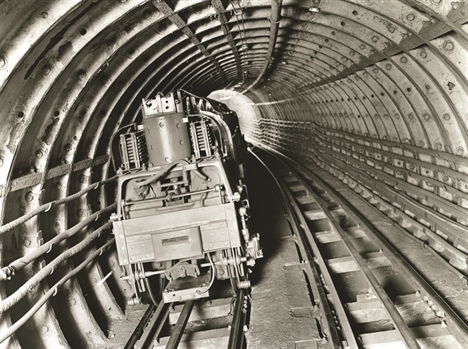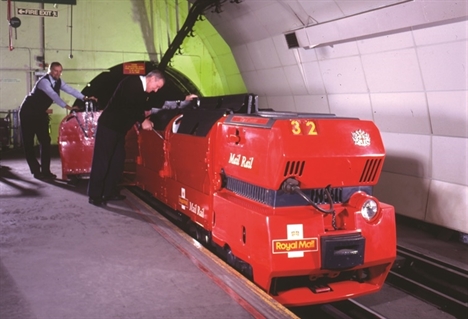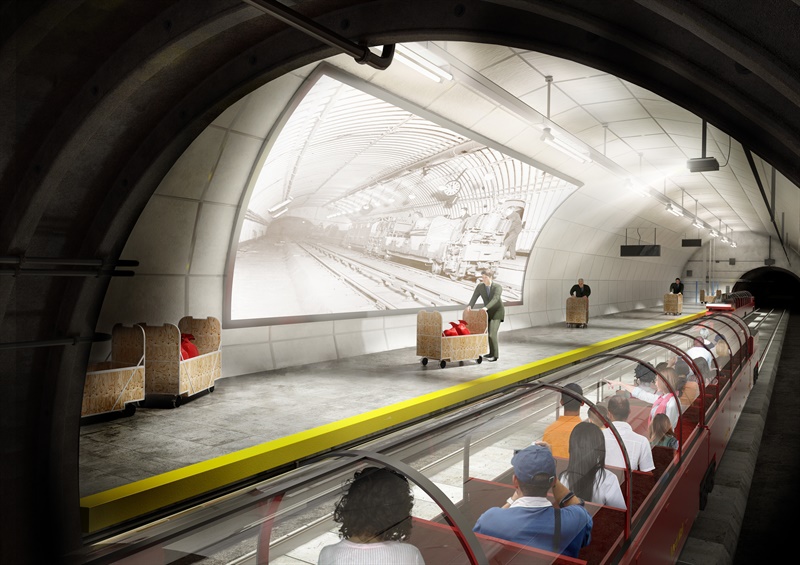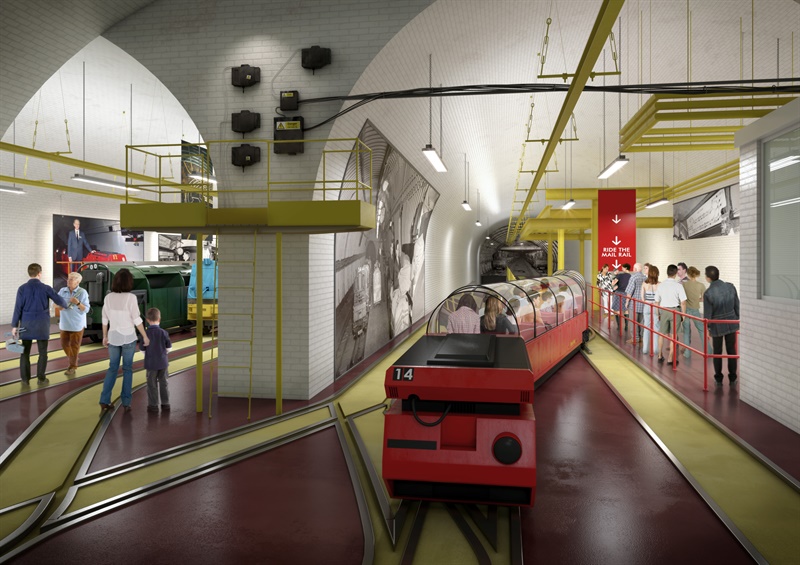02.05.14
Mail Rail: past, present and future
The Post Office Underground Railway – Mail Rail – silently and industriously ran under the streets of London largely unnoticed for more than three-quarters of a century. But since 2003, the world’s first driverless, electrified railway has lain dormant with just a handful of engineers to maintain it. Under new plans developed by the British Postal Museum & Archive, that could all be about to change, as the organisation’s head of collections Chris Taft explains.
By the turn of the 20th century, with thick smog regularly bringing the already heavily congested thoroughfares of London to a standstill, mail transported between main Post Offices and railway stations was subject to severe delays. To ensure the continued timeliness of deliveries, the General Post Office sought ways to resolve this issue.
Having scoped out possible options, in February 1911 a Government Departmental Committee recommended the construction of an ingenious underground electric railway with driverless trains – the first of its kind anywhere in the world. In 1913 the Post Office (London) Railway Bill was passed as an Act. The new railway was to consist of six-and-a-half miles of tunnels at an average of 70 feet below ground. It would connect the West and East ends of London via eight stations and reduce the time taken for mail to cross London from many hours to just 30 minutes.
Tunnelling began in 1914 and was completed in 1917 but, with raw materials diverted in support of the ongoing war effort, the Treasury would not allow the Post Office to order or install any operating equipment, including track. The tunnels were instead used to protect art treasures belonging to the National Portrait Gallery and the Tate Gallery. The price of materials remained high for some time following the end of the First World War, meaning that work on the railway did not resume until 1923. It finally opened on 5 December 1927, 13 years after the ground was first struck.

Designed to run trains just a couple of feet in width, Mail Rail’s tunnels are much smaller than on London's passenger underground, although the stations look much the same, with grand circular walls and the familiar sound of approaching trains. The trains run in a single tunnel, 9ft in diameter, with a double 2ft gauge track. At the station approaches, the main tunnel divides into two 7ft tunnels, each with a single track. A 27ft single-car train was able to carry four mail bag containers with every container holding an average 15 bags of letters or six bags of parcels. At its peak, that equated to more than six million bags of mail a year – around four million letters every day.
The railway played a pivotal role in the transportation of mail in London, Britain and across the globe for the next 76 years. Its continued, rarely interrupted, service – the trains ran throughout WW2 – is testament to the skilled engineering and maintenance teams that kept the system running. The network even had its own underground workshop beneath Mount Pleasant, capable of undertaking all but major castings.

Despite the vital role the railway had played, declining use and closure of offices above stations meant it eventually became un-economical to run. In 2003 the system was suspended and today remains closed, save for a team of three engineers who maintain the tunnels using two original 1926 350v English Electric battery locomotives.
Under new plans developed by the British Postal Museum & Archive, that could all be about to change.
In March, Islington Borough Council approved the planning application to develop a stretch of Mail Rail into a unique subterranean ride. The decision means visitors to the newly created Postal Museum, due to open in central London in 2016, will be able to explore the hidden world of this railway under Mount Pleasant through an engaging exhibition and, later, interactive ride. Visitors will be taken through 1km of the original tunnels, following the same route that much of the nation’s mail took for nearly 80 years from 1927-2003.

The Car Depot, where the rail cars were brought for maintenance, will be transformed into exhibition and corporate hire space, preserving the industrial appearance of the site. The Mail Rail ride will descend into the network of tunnels from this depot, passing the station platforms and stopping at various points before returning.
Through interactive displays, hands-on activities, compelling imagery and audio-visual technology, the Mail Rail experience will reveal the sights and sounds of the railway as never before. As part of the experience, visitors will also be able to explore the extraordinary stories of British social, communications and design history through the iconic postal service at The Postal Museum. Revealing records and objects from the reign of King Charles I to the present day, the permanent exhibition zones will showcase curious items including a first edition of James Joyce’s Ulysses, original evidence from the Great Train Robbery trial, and flintlock pistols used to defend Mail Coaches in the 19th century. Visitors will experience the captivating and ingenious stories of how global communication has transformed over the past 400 years.
Visit www.postalheritage.org.uk
